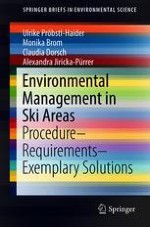This book raises awareness of environmentally friendly and resource-sparing management of winter sports areas, in order to increase the number of certified ski areas. Many ski areas today are advertised with seals of approval, titles and awards. Often, however, it is unclear which institutions and criteria are behind these appraisals. This practice is widely criticized as “green-washing”, since a cautious use of ecologically and scenically sensitive mountain areas is more important now than ever. An environmental management system based on international or European standards ensures “real” improvements and external evaluation, but relies on the personal responsibility of the providers rather than on regulations imposed by authorities. This book contributes to developing a trustworthy and unified system for such evaluation, and one that can be applied internationally.
